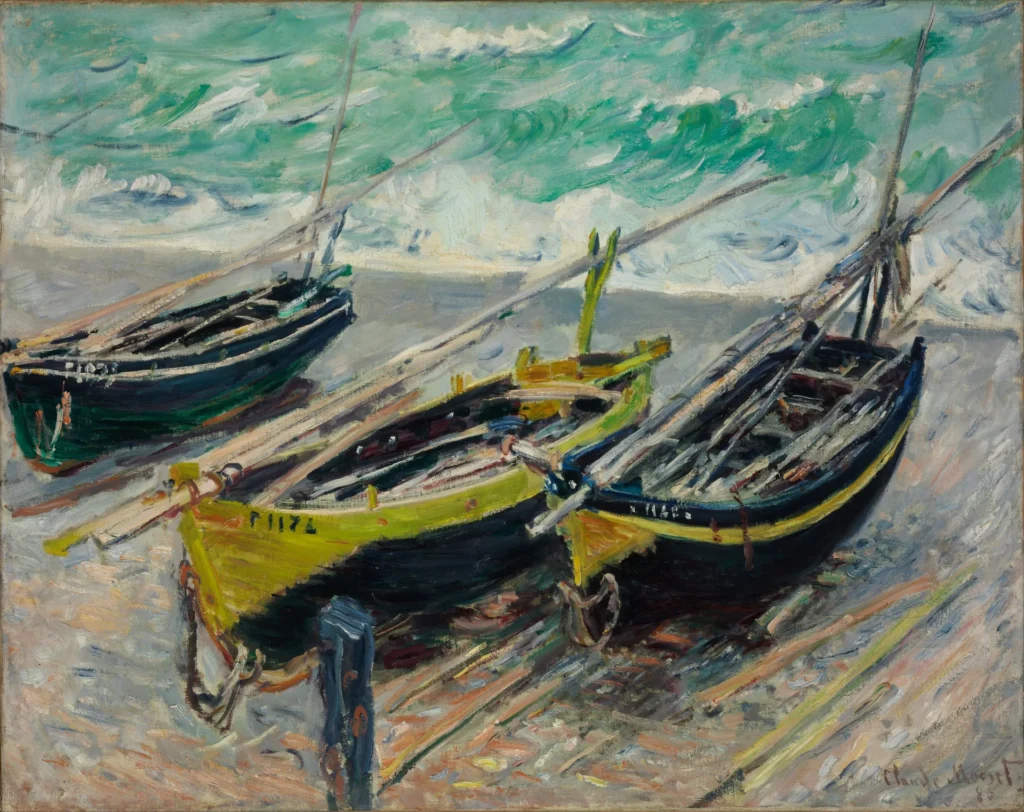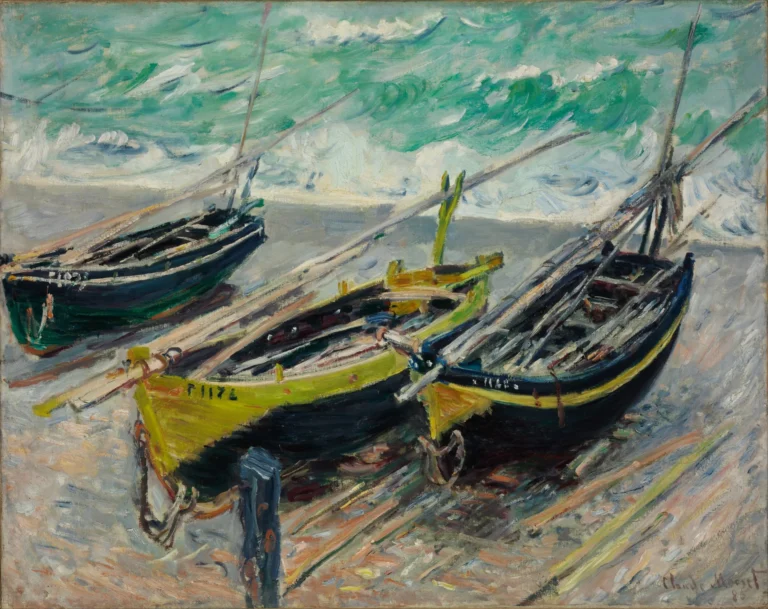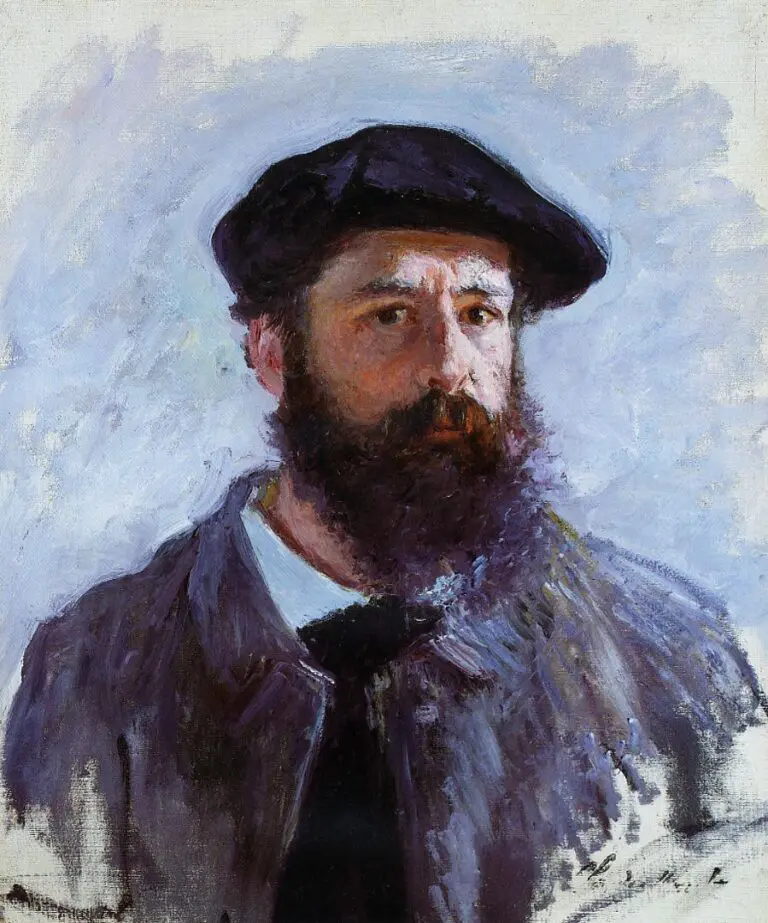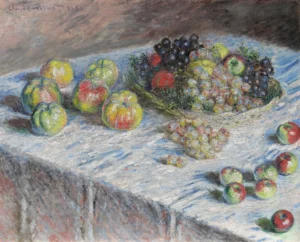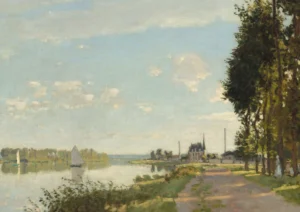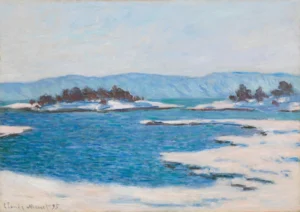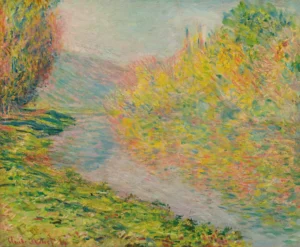Three Fishing Boats
Completed in 1886, Three Fishing Boats is a captivating oil on canvas painting by Claude Monet, showcasing his mastery of light and color within the Impressionist movement. Measuring 73 x 92.5 cm, the painting portrays three fishing boats in a coastal setting, likely near Étretat. Monet's bold brushstrokes vibrantly depict the frothy waves and air currents, creating a dynamic and immersive seascape. The work is currently displayed in the Hungarian National Gallery, offering an engaging glimpse into Monet's outdoor painting techniques and his profound connection to nature.
1886
About the Artwork
The story behind Three Fishing Boats reveals Monet's unwavering dedication to capturing the essence of nature through his painting. Often working en plein air, Monet reacted directly to the shifting conditions of light and weather, pushing him to explore various canvases simultaneously. This particular scene, likely set near one of his favored coastal spots, showcases the artist's skill in observing and representing the ephemeral qualities of his surroundings. By focusing on the interplay of water and air, Monet immerses the viewer in the atmosphere of the moment, allowing them to feel the energy of the sea.
Did You Know
Étretat, where the boats were likely painted, was a beloved location for Monet, inspiring multiple artworks throughout his career.
Monet’s innovative approach to painting in natural light, known as ‘en plein air,’ allowed him to dynamically capture fleeting moments and the subtleties of colors in his works.
As a foundational figure in Impressionism, Monet’s works, including Three Fishing Boats. marked a departure from traditional representation, influencing future generations of artists to explore light, color, and spontaneity.




